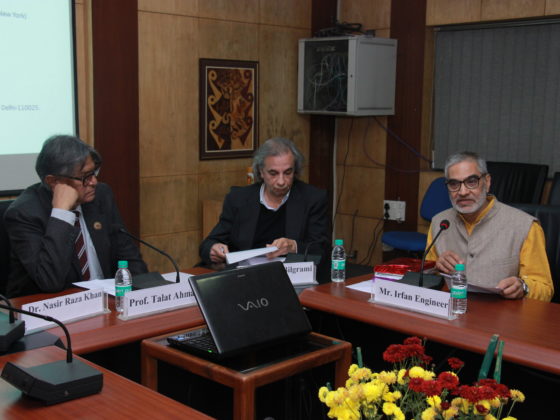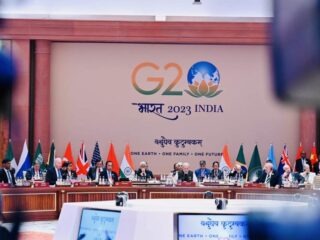Neha Dabhade
(Secular Perspective December 16-31, 2017)
Recently in Rajsamand, Rajasthan, one Shambu lal Raigar brutally hacked Mohammad Afzarul, a migrant from Malda, West Bengal to death with his own tools and set fire to his body. This ghastly act was captured on camera by Raigar’s 14 year old nephew who then circulated the video on social media. Raigar on the video justified his act by arguing that he was “saving” Hindu women from love jihad and similar consequences would follow for Muslim men if they indulged in ‘Love Jihad’ (Indian Express, 2017). Investigations found that the 48 year old victim hadn’t married a Hindu girl. Though this brutal act foregrounds important questions regarding targeting of Muslims, spreading hatred against them and infringement of their rights with steadfast impunity, the act also necessitates discussion on so called ‘Love Jihad’ which has dominated the public discourse.
“Love Jihad” is a term coined by Hindu supremacists who allege that Muslim men “trap” Hindu women and convert them into Islam. Rajsamand case is not isolated in its bid to spread hatred against Muslims. There is a systematic campaign to malign and target the Muslim community under this campaign since a few years. Such targeting of any community is condemnable but there is also a need to locate women in this campaign and its implications on their rights and agency. The vitriolic campaign the Hindu supremacists would have us believe is to expose the libidinal vices of the Muslim men. What this smokescreen really covers is the attitudinal violence which manifests in different forms – honour killings at the behest of Khap Panchayats, beating up of women in public spaces when seen with a man, portraying them to be objects of procreation with no agency of their own when they are asked to reproduce certain number of children for the ‘nation’.
While literature on women’s movement and communalism is replete with discourse of how women’s bodies are sites of community honour during communal riots at the time of partition and subsequent riots and violence in order to dehumanize the ‘other’ community during communal violence, it is imperative to reiterate that violence against women is not limited to communal violence alone especially today when the trend of communal violence is changing. For example, there are not large scale riots where substantial number of innocent from one community is targeted. Communal violence today relies more on creating a discourse which justifies targeting of a community and strengthening structures of inequality. The Hindu supremacists have deployed ways and strategies to subjugate women – not only women from ‘other’ community but women from their own community and perpetuate violence against them. This is achieved by imposing and naturalizing a discourse which draws boundaries around them restricting their liberties and controlling their choices. ‘Love jihad’ is one such way. ‘Love jihad’ is part of a larger communalized discourse where women’s agency is appropriated by fundamentalists and multiple patriarchies are reproduced in insidious ways. Today the Hindu supremacists with the tacit and sometimes overt support of the State are deepening unequal power structures and patriarchy through vicious campaigns and propaganda which they claim is to protect the Hindu women. All these campaigns strengthen their masculinized and exclusivist discourse which undermine women’s liberties.
Two points are particularly important and worth emphasis. Though the right has always entrenched inequality and discrimination against women, what is so different now in campaigns like ‘love jihad’ or the broader narrative on women in India today? Firstly the legitimacy that this fabricated campaign is gaining owing to the judgments like Kerela judgments and very little or no condemnation by the State is having a normalizing effect on this appropriation of women’s agencies and choices. Not only is there no condemnation, but the State takes no action against vigilantes and forms squads like ‘anti Romeo squads’ which have been given a free hand to indulge in moral policing. Though there has always been a bid to control women’s bodies and the paranoia around their sexuality, such acts of controls were not institutionalized or form the dominant discourse enjoying legitimacy in that sense.
Secondly the structures of control were more rigid in rural areas and some degree of loosening of this structure took place in the middle and upper middle class in urban areas where the women negotiated for their right to work, mobility and to some extent sexuality or choosing a partner (inter-caste marriages even today have severe consequences and honor killings are not limited to rural areas alone). Change was also largely due to the women’s movement which challenged patriarchy and asserted women’s liberties and equalities. But this limited space that was created is also threatened with this attempt to entrench traditional discriminatory gender norms by Hindu right wing politics. Right wing politics and fundamentalism naturalizes and sacralises the family and sexuality and secludes women from public sphere. Right wing politics manipulates women’s issues which results in disempowering women. This trend is a definite setback to the women’s movement. This marks a shift in discourse which was dominated with sexual violence against women during communal riots to everyday violence through different social structures when one tries to understand the impact of right politics on women.
The case of Hadiya is a case in point. Hadiya, earlier Akhila Ashokan is a 24 year old homeopathy student in Kerela. Her story sums up perfectly the issue at hand. She converted to Islam out of her own free will and married a man of her choice. However as pointed out by authors like Janaki Nair and others, different sections of the society completely infantilized her and her choices. The Kerela High Court annulled her marriage with Shafin Jahan, a Muslim man and gave her custody to her parents. Her parents virtually kept her locked inside the house with Hadiya begging for her freedom and wanting to live with her husband. The Supreme Court allowed her to go to college and continue her education but appointed the principle of the college as her guardian as if she was a chattel and not an adult full citizen of the country! The case of her marriage will be heard later by the Supreme Court thus prolonging her agony and injustice. All this is abhorrent to the notion of full citizenship rights of a woman. An adult woman who is a citizen of India we would have liked to believe is entitled to exercise her fundamental rights of right to religion and right to life. They are violated with impunity though women activists have been protesting and demanding justice for Hadiya.
There is very analytical literature available to understand how and women gravitate towards the right wing politics and how women become perpetrators as well as victims of violence reproducing hyper masculinized nationalism and end up strengthening patriarchal structures. But not much is said about the power mechanism at work in campaigns like love jihad. Here the centrality of women’s body in communalized discourse is the focus. The agenda is reclaiming Hindu women and mobilizing them against the Muslims in turn reproducing multiple patriarchies at different levels- police, judiciary, families, community. Women have to pitch their fight for liberties at all these levels making it all the more arduous for them. This is what makes such campaigns so detrimental to the rights of the women and lays down ideological underpinnings of Hindutva.
The control of women’s bodily autonomy and the policing of strict gender norms is a hallmark of fundamentalist ideology that transcends all religious and geographical boundaries. In Hitler’s Germany, “Aryan women” were encouraged to have more children while even before the holocaust there were large scale sterilizations of Jewish women. In India for instance, a five day fair was organized the Hindu Spiritual and Service Foundation (HSSF) in Jaipur in November, 2017. Focus was to address issues like family and human values, women’s honour, patriotism, environment, ecology and pollution. It’s noteworthy that it was made compulsory from government schools to attend it by the Rajasthan government. At the fair, Bajrang Dal was freely distributing manuals on “love jihad’ which detail the ways in which Muslim men supposedly trap Hindu women – “friendship in school, bike ride, hanging out in restaurants, chatting on mobile, addressing their parents with respect and blackmailing through obscene pictures”. It also prescribes remedies and precautions to the ‘affected’ Hindu family – “frequently check the female’s belongings, call and SMS details, warn the Muslim boy if found with a Hindu girl, call Muslims as disgusting/terrorist/smuggler/traitor/Pakistan supporter in front of females at home” (Jain, 2017). If one has to interpret this, outlining such ways don’t only spew hatred against Muslims and but also undermines many decisions a woman is entitled to take as a free citizen of the country – whom to interact with/ make friends with, who to share public space with and ensuring public spaces are equally accessible to women, freedom to choose what kind of relationship they want to have with the opposite sex or even same sex! The Hindu supremacists also seek to deepen their idea of a patriarchal family which rests on the hierarchies and authority where women are considered property and honor of the family. Thus any amount of control and restrictions are justified as seen in the case of Hadiya’s parents and the reasoning of the Kerela High court.
‘Beti Bachao Baho lao’ campaign by the Hindu Jagran Manch is a form of ‘reverse love jihad’. In this case, encouragement is given to Hindu men to marry Muslim women by giving them social and financial security. The target is to get 2100 Muslim women into the ‘Hindu’ fold in six months. The group has initiated a campaign in Uttar Pradesh in 2016, “save Hindu girls” by distributing pamphlets openly to educate the girls and their families (Verma, 2017). This step is vicious and exposes the attitude of the Hindu supremacists which view women as commodities. This brings the focus back on the overt nature of such campaigns and points towards the support it has of the State. The state and the Hindu supremacists that it supports naturalize this control and oppression by garbing it under ‘Indian culture’ and revivalism of the ‘glorious past’. It puts women’s choice and control especially over their bodies in jeopardy. The recent rule by the Home ministry to ban condom ads from 6am and 10pm can be seen in the same context. While women’s movement has been fighting for women’s reproductive rights, the State is undermining the process by again portraying such ads as not according to culture and in effect undermining the liberty and choice of women.
As outlined above, Hindu supremacist and the state are placing a formidable challenge before the women’s movement in India and women’s lives as a whole. Their status as free citizens is systematically undermined by a regressive discourse which is used also to fan communal tensions and stigmatizing vulnerable communities. It will be immensely timely if such campaigns can be seen in the larger framework of oppression of women and deepening of patriarchal structures. The location of women in national agenda has to be critically examined and debated by all sections of the society. The control on women’s agency and liberties under the patronizing pretext of “saving” should not be allowed to be used for undermining their own rights and spreading hatred against other communities. Instead the State must be questioned and made accountable for the policies which affect women’s real issues like livelihoods, healthcare, education, equal laws etc to ensure they truly are citizenship rights in reality and not just in the Constitution. It is not surprising that India fares poorly when it comes to human development indicators related to women even in comparison to countries like Bangladesh and Sri Lanka. Different sections of the society, which has uncritically internalized the need of control over women since they are portrayed as bearers of ‘honour’, must be made aware of the agenda of such campaigns. This means creating a different vocabulary of rights for women, a narrative which emphasizes on equality and non violence. Else women stand to lose the hard earned space and rights they have after struggling for so long.
—————————————————–
Centre for Study of Society and Secularism
Mumbai.





